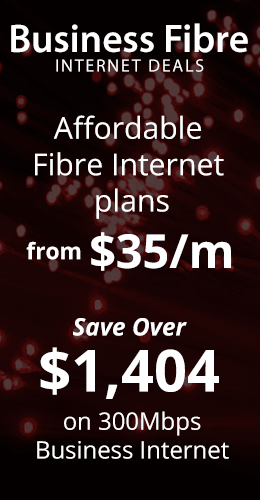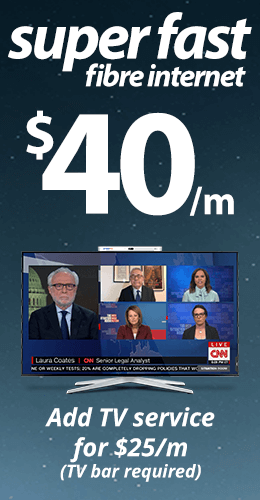Database and Server Administrator
Database and Server Administrator
This is a full-time on-site role for a Database and Server Administrator located in Vancouver, BC. The Database and Server Administrator will be responsible for maintaining critical database and server infrastructure, including installing, configuring, monitoring, backing up, and restoring databases, as well as optimizing databases for performance and security. The Database and Server Administrator will also collaborate with cross-functional teams to identify business requirements and provide customized solutions, and participate in disaster recovery exercises and capacity planning activities.
Qualifications
- Strong understanding of database and server administration principles, including knowledge of Microsoft SQL, CockroachDB, MongoDB, MySQL, Linux, and Windows Server
- Experience with cloud-based database and server environments, and familiarity with Kubernetes, Docker, Cloud Platform
- Advanced knowledge of database performance optimization and tuning, database backup and recovery strategies, and database security tools and practices
- Experience in scripting or automation tools (e.g., shell scripting, PowerShell, Python) is a plus
- Prior experience in technical documentation, disaster recovery planning, and capacity planning is a plus
- Demonstrated ability to work independently as well as in a team environment with strong problem-solving, analytical, and interpersonal skills
- Bachelor’s degree or higher in Computer Science, Information Technology, or a related field
Industry : Telecommunications
Employment Type : Full-time
Company Description
AEBC Internet Corporation is a Vancouver-based ISP that offers high-speed internet and TV packages to home and business customers in British Columbia and Alberta. For over 23 years, AEBC has provided quality-engineered services, AEBC is a facility based ISP that has its own TV broadcasting computer data center and servers serving Canadians across Canada from the Atlantic coast to the Pacific coast.
Apply to hr@aebc.com with Database and Server Administrator in the subject line.
Is Business Fibre Optic Internet Worth the Price? Unleashing the Power of Speed

Is Business Fibre Optic Internet Worth the Price? Unleashing the Power of Speed
In today’s fast-paced business world, having a reliable and high-speed internet connection is essential. Enter business fibre optic internet, a cutting-edge technology that promises lightning-fast speeds and unparalleled reliability. However, as with any premium service, the question arises: is the price worth it? Let’s dive into the world of business fibre optic internet and explore its benefits, considerations, and ultimately, whether it’s a worthwhile investment for your business.
The Need for Speed:
Speed is crucial in the digital landscape, where businesses rely on seamless communication, real-time collaboration, and quick access to cloud-based applications. Business fibre optic internet delivers incredible speed, surpassing other connection types such as DSL or cable. With speeds of up to 10 gigabits per second (10 Gbps), it enables rapid data transfer, smooth video conferencing, and swift file downloads/uploads. This level of speed empowers businesses to operate efficiently and stay ahead of the competition.
Reliability that Transcends:
In addition to its exceptional speed, business fibre optic internet offers unmatched reliability. Unlike traditional copper or coaxial cables, fibre optic cables are immune to electromagnetic interference and offer better protection against physical damage. This translates to minimal downtime and a consistent connection, allowing businesses to operate smoothly without interruptions. With fibre optic internet, you can bid farewell to frustrating outages that disrupt your operations and customer interactions.
Considerations: Price vs. Value
It’s true that business fibre optic internet comes at a higher price compared to other connection options. However, it’s important to consider the long-term value it brings to your business. The enhanced productivity, reduced downtime, and improved customer experience can directly impact your bottom line. Moreover, as technology continues to evolve and demand for bandwidth increases, fibre optic internet future-proofs your business by providing scalability and adaptability.
Is it Worth It?
Ultimately, the decision of whether business fibre optic internet is worth the price depends on your unique business needs and goals. Assessing factors like the size of your business, the nature of your operations, and your reliance on high-speed, reliable internet is crucial. Consider the potential impact of improved productivity, customer satisfaction, and the ability to leverage advanced technologies. It’s an investment that can propel your business forward and unlock new opportunities.
Conclusion:
Business fibre optic internet offers tremendous speed and reliability that can transform the way your business operates. While the price may be higher, the benefits in terms of productivity, customer satisfaction, and future-proofing your business cannot be overlooked. Evaluate your specific requirements and consider the long-term value it brings. In a world driven by technology, embracing business fibre optic internet is a bold step towards success.
Ready to unleash the full potential of your business with business fibre optic internet? Explore the comprehensive guide on AEBC’s website. Discover how this game-changing technology can take your business to new heights. Don’t settle for less when it comes to your internet connection. Invest in speed, reliability, and the future of business connectivity today.
10 Tips and Tricks to Optimize Your Internet Speed and Improve Your Online Experience
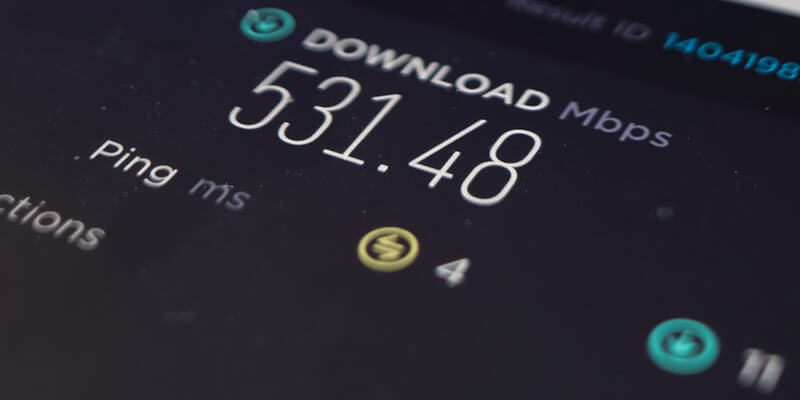
10 Tips and Tricks to Optimize Your Internet Speed and Improve Your Online Experience
Conduct a Speed Test
The first step to optimizing your internet speed is to determine your current speed. You can use free online tools like Speedtest.net or Fast.com to measure your download and upload speeds. If your speed is below the expected range for your plan, contact your internet service provider (ISP) for assistance.
Upgrade Your Router
If you’re still using an outdated router, upgrading to a newer model can significantly improve your internet speed. Look for routers with advanced features like dual-band connectivity, Quality of Service (QoS) settings, and beamforming technology.
Position Your Router Strategically
The position of your router can also affect your internet speed. Place it in a central location away from obstacles like walls and metal objects. Ideally, it should be elevated and have clear line-of-sight to your devices.
Minimize Interference
Interference from other devices like microwaves, cordless phones, and Bluetooth speakers can also affect your internet speed. Move these devices away from your router or switch to wired connections instead.
Clear Your Browser Cache
Clearing your browser cache and history can also help improve your internet speed. Over time, your browser accumulates temporary files and data that can slow down your connection. Clearing these can help free up resources and improve performance.
Install Ad Blockers and Malware Protection
Ads and malware can also slow down your internet speed. Installing ad blockers and malware protection software can help prevent these from affecting your connection.
Use Ethernet Cables
Wired connections generally offer faster speeds and more stable connections than wireless connections. Whenever possible, use Ethernet cables to connect your devices directly to your router.
Disable Background Applications
Background applications and processes can also affect your internet speed. Close unnecessary applications and processes to free up resources and improve performance.
Prioritize Your Network Traffic
If you’re sharing your connection with multiple devices, prioritizing network traffic can help ensure that important applications like video conferencing or online gaming receive adequate bandwidth.
Upgrade Your Plan
Finally, if none of the above tips work and you still find yourself struggling with slow internet speeds, consider upgrading your home internet plan or consult with us to see what options are available in your area.
Optimizing your internet speed and improving your online experience doesn’t have to be difficult or expensive. With these 10 tips and tricks, you can improve your connection and enjoy a faster, more reliable internet experience.
What is Business Fibre Optic Internet?

What is Business Fibre Optic Internet?
Business fibre optic internet offers tremendous speed, but is the price worth it?
As you consider the best options for your business’ high-speed internet, fibre optic internet may be something worth exploring. Although this type of connection is one of the fastest and most reliable, it can cost more than some users are willing to spend. Our guide clarifies the differences between fibre optic internet and other types of web connectivity so that you can make an informed decision about which type and which best internet company is for your company’s needs.
What is fibre optic internet?
Fibre optic internet is a type of high-speed connection that uses specialty cables to deliver lightning-fast, fibre network redundancy, reliable broadband from the internet business service provider directly into your office or to your premises. It is widely considered the fastest internet option available, blazingly fast compared to other types of networks.
What is the technology behind fibre optic internet and how does it function?
Fibre optic cables use light to transmit data that has been converted from electrical signals. This signal – which is more efficient and less prone to interference than signals sent through copper lines or coaxial cables – travels along the glass core inside each cable. Fibre optic cables transmit data faster than other methods of transferring information over the internet.
Fibre optic cables are amazingly thin – thinner than a strand of human hair. Fibre optic cables have a plastic or glass covering called “cladding” that surrounds the core. The cladding around the fiber optic cables helps ensure that light signals sent down them don’t get lost. This reinforces their high speeds.
How is fibre optic installation done?
Fiber optic internet installation requires two distinct steps: Construction completed outside your business, and work conducted inside the building. Fibre optic cables can be placed along telephone poles or buried underground. Before your business can take advantage of fibre internet, this infrastructure must be in place.
Fibre optic cables are typically placed underground, but some may be strung above ground along telephone poles. Building infrastructure is the first step in connecting to fibre internet.
Before asking for installation, you should confirm whether your area has access to fibre-optic internet service. You can confirm this with us – AEBC Internet Corp. We may determine this information based on the address you provide.
Once we have established that your business can use fibre optic internet, the next step is to schedule installation. AEBC offers a dedicated fibre internet connection.
What is dedicated fibre internet connection?
A dedicated fibre optic connection is for your business use alone and no one else. The network is only used for your company’s business activities. This can guarantee a responsive network, sustained speeds, and gives you full control over which devices are using the network. To have a dedicated fiber optic connection, you must have: a path leading from the provider network to your router; and grounding equipment.
Businesses that rely heavily on cloud-based software, data analytics, streaming video – for example, and similar high-bandwidth activities will find a dedicated fibre connection to be most beneficial. It also provides the highest level of network security for companies that want it.
Once you’ve decided a dedicated fibre optic connection, the next step is setting up the connection. Optical fibre equipment must be kept away from heat, humidity and dust to avoid dust. AEBC will install the equipment, test that it works and then complete installation.
How fast is a fibre-optic internet connection?
Fibre optic internet connections are a popular choice among both businesses and home users. It is capable of delivering speeds of up to 10 gigabits per second (10 Gbps), although most fibre optic connections clock in at 1 Gbps—sometimes much less. The speed of a fiber optic connection can be limited by whether your connection is hardwired or via Wi-Fi, and other considerations. Businesses that use 1 Gbps or less for their high-speed internet transfers can still conduct other types of intensive tasks such as streaming video and relying on cloud-based software much faster than if they were to use DSL, cable or a standard landline connection.
Fibre optic has numerous benefits for business owners.
Fibre optic internet is a high-speed, reliable type of connection that many businesses are turning to. In addition to being faster than other high-speed options, here are some reasons you should consider fibre optic internet for your business:
- With fiber optic internet, business users can stream video, transfer large files back and forth—and run other high-intensity tasks without impacting overall speed.
- On a typical internet connection, files typically download at faster speeds than they upload. (FCC regulations require broadband service providers to offer customers download speeds of at least 25Mbps and upload speeds of no less than 3Mbps.
- The architecture of fibre optic network is designed with upload speeds in mind. Streaming content, such as live video broadcasts to the Internet, requires a steady upload speed. Fibre optic networks provide internet subscribers with upload and download speeds that are equal or symmetrical to each other. (25/25Mbps, 75/75Mbps, 150/150Mbps)
- Delivers speed without sacrificing performance. Speed and availability can be negatively affected if too many devices or programs are connected to the network. Fiber optic internet can keep up with fluctuations in bandwidth and still provide a constant, fast connection.
- Latency is a measure of the time it takes for data to travel from one point to another. This time, in milliseconds determines how fast your connection to the internet is. Because fibre optic cables convey data more rapidly than other high-speed internet connections, they offer less to no latency.
- Most buried underground fibre optic cables are unaffected by wind, storms or other natural disasters. This means that the internet is less likely to go down during a storm, giving your business and its employees more uptime.
What are the differences between fibre optic internet and other high-speed internet options?
As you analyze your business internet service options, it’s helpful to understand the various technologies and assess their advantages and disadvantages. Here, we discuss reasons why fibre optic internet is superior to other types of internet connections.
Business Fibre Optic Internet vs. Business Cable
Cable internet uses the same cables used in television to deliver internet service or information online. The cables used in television uses copper. The copper-core in these cables carries electricity to transmit data from the Internet Service Provider (ISP) to your business. Cable internet access is readily available: if your business already has a cable TV hookup, adding cable internet will generally be an easy process.
Cable internet connections are fast, capable of reaching speeds up to 1,000 Mbps. However, they pale in comparison with fiber optic internet’s high-speed potential—which can reach tens of thousands of Mbps. Cable Internet does not have the same download/upload speeds that fiber optic Internet has. It’s much faster than other connection types like DSL and dial-up, is still subject to more power outages because it runs through the cable network.
Business Fibre Optic Internet vs. Business Dial-up
Fibre optic network and dial-up connections provide two different ways of accessing the internet. While dial-up is connected to telephone lines, fibre optic internet uses dedicated cables.
Dial-up internet service was the first widespread way for businesses and homes to get online, but it’s also one of the slowest. Because of their technical limitations, dial-up modems cannot support connections that exceed 56 Kbps.
Dial-up internet has declined in popularity over the years and gradually replaced by fibre optic or other newer high-speed internet connections.
Business Fibre Optic Internet vs. Business DSL
DSL (Direct Subscriber Line) was revolutionary internet service when it debuted because: These lines enabled a user to use the business phone and internet at the same time. It is imperative for any business to be on the internet today – so much of our daily lives and business functions depend upon it.
Like dial-up, DSL and fibre optic cable differ primarily in terms of speed. DSL speeds can sometimes reach 100 Mbps, though more commonly they top out at 6 Mbps. Fiber optic internet is significantly faster—with download and upload speeds of 1 Gbps or higher possible.
If your workforce frequently downloads or streams content, it can be difficult to work with DSL. DSL connections may be slowed down by the simultaneous use of many devices connected to the same network.
DSL is typically less expensive than fibre internet. This is because business telephone systems are already in place, DSL can be installed fairly easily. Fibre optics are not readily available, because they generally require new cables to be laid in order for them to work.
If you’re running a business, does it make sense for your company to have fibre internet?
Fibre-optic internet can be a wise investment if your company depends on high speed business internet connections.
If your company or business frequently transfers large files, participates in videoconferences or relies on cloud-based software that requires the internet to operate, fiber-optic internet may be best for you.
However, this all depends on whether or not your business’s location can receive a fiber-optic internet connection.
Our vision at AEBC is to help Canadian entrepreneurs take full control of their business. We’d love to know how we can make this happen for you. If you are interested, please click below to start an inquiry:
Switch to AEBC Fibre Internet and Get More of What You Really Want
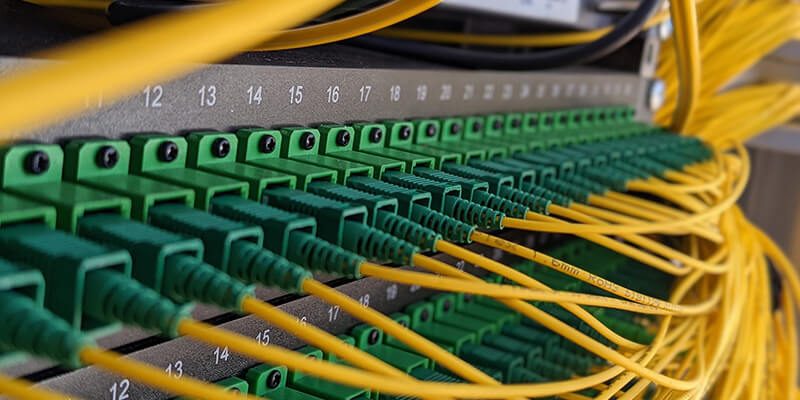
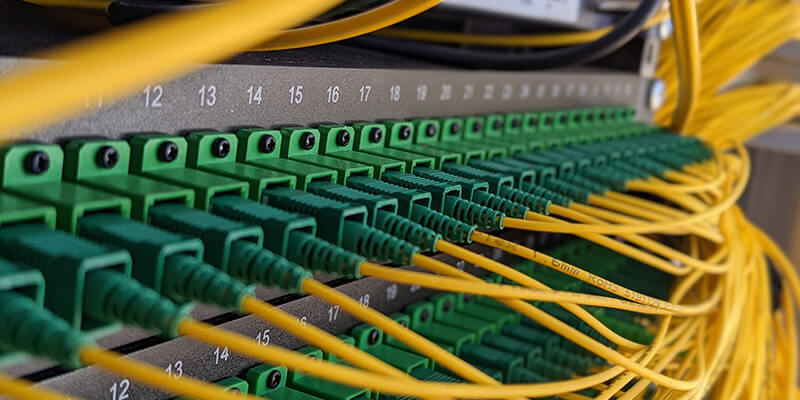
Switch to AEBC Fibre Internet and Get More of What You Really Want
AEBC fibre service provides fast, reliable internet services that can help you do more of what you enjoy online. A solution that gives you the power to easily access your customers, expand your website for a better user experience and video conferencing – all that while staying secure.
AEBC internet offers fibre services designed specifically for business
You probably know that fibre is fast. But not all business fibre is created equal. AEBC business fibre is the best choice because it delivers ultrafast speeds up to 1000Mbps, as well as 99% reliablity and more.
AEBC fibre service provides fast, reliable internet services that can help you do more of what you enjoy online. A solution that gives you the power to easily access your customers, expand your website for a better user experience and video conferencing – all that while staying secure.
Keeping your business connected

Fibre optic internet access, with its dedicated bandwidth and high-capacity lines, provides more power to your network.
- Efficiently send and receive large files
- Make video calls to colleagues and clients without dropping the call or freezing the video.
- Run updates whether while you’re working or not.
- Quickly backing up data
AEBC offers several benefits to its customers, including:
- Lightning-fast
AEBC Fibre to the business is much faster than even the fastest copper-based connections from 25Mbps to 1Gbps, we offer a range of internet connection speeds.
- Reliable Connections
AEBC fibre to the business internet service is not subject to the disruptions caused by inclement weather that may affect transmission via copper cabling.
- Cost-effective
If your company’s productivity suffers due to unreliable Internet connections, you could waste thousands of dollars per year.
- No Latency
VoIP users will have better voice quality, and improved support for moving apps to the cloud, allowing seamless transfer or uploads and downloads of large files.
AEBC Fibre Internet Access to the Business
Speeds range from 25/25Mbps to 1000/1000Mbps
We offer dedicated bandwidth at affordable rates that meets business class uptime requirements. A good solution for businesses such as large enterprises that may have customer-facing websites or web apps with significant traffic; branch offices that access various applications from the main office; and remote offices as well that upload content.
- High-speed bandwidth enables delivery of high-quality streaming media and large uploads/downloads.
- A symmetrical connection ensures dependable delivery of data at a consistent speed.
- Fibre internet service offers much faster speeds than DSL and cable and unlike those services, fibre is not affected by distance.
- Be able to transfer large files or data in seconds or minutes rather than hours.
- Fibre internet is an excellent alternative to standard broadband when running a business VoIP service, as it offers crystal clear calls and substantial savings.
AEBC Fibre Connection makes it easier to do these 3 things.
Cloud Access and Storage
A recent study by McAfee found that 83% of businesses store sensitive data in the cloud. This shows that employees are constantly accessing cloud storage services like AWS, Google Drive, Azure, and Dropbox to find important files. The more files that are stored on these sites, the longer it will take for them to load.
Streaming Video
In recent years, the amount of video consumption taking place online has increased exponentially. Streaming video consumes significant bandwidth. For businesses that stream live video or conduct many web-based conference calls, a robust internet solution is necessary. Fibre-optic internet ensures that videos are streamed smoothly and without delay, even when multiple team members are using the web simultaneously.
Updates Automatically
It is convenient to have software that updates itself when latest versions or fixes are released. It gives employees more time to devote to other tasks, since the program updates itself automatically. Automatic updates are a great way to keep your software up-to-date, but they can also consume bandwidth. For broadband subscribers, these constant scans and downloads can cause bandwidth issues—slowing down connections and making other tasks more time-consuming.
What is symmetrical internet and how does it work


What is symmetrical internet and how does it work?
In this fast-paced world, you should strive to be efficient and quick. Which is why speed is everything. Fibre optic internet is the best choice for all businesses. It’s efficient, affordable, and simple to use. Because fibre optic internet is so fast, it’s often described as symmetrical – meaning the download speeds are just as fast as uploads. So, if your download speed is 100 Mbps, then the upload speed of your connection will also be 100 Mbps.
If a plan is labeled as 75/75, 150/150, 300/300, 500/500 or something similar, you will get the same download and upload speeds. Cable internet services typically offer asymmetrical speeds – your download speed may be faster than your upload speed.
How symmetrical internet can benefit you?
Many businesses can stay afloat with internet connection speeds of less than 50 Mbps. If you can recall in the 80s or 90s just how excruciatingly slow dial-up internet was. So, you may wonder why you need symmetrical internet if 50 Mbps is enough to survive on? Would it even matter to have an equally fast upload speed?
If you mainly use the internet to surf the web, check your email, and check your family or friend’s Facebook photos, then you probably don’t need symmetrical internet. But if you are a student, working from home or a business owner, or a content creator who works most of the time via the internet (and doesn’t like stuttering or spinning wheels), symmetrical internet is for you.
These people mentioned often work with uploading PDF files, large format graphic files and videos to the internet is often used by those working with sharing these types of documents among clients, coworkers or teachers.
The chart below shows the estimated time it takes to upload different files at various speeds.
|
UPLOAD SPEED |
FILE SIZE |
UPLOAD TIME |
|
10 Mbps |
1 GB |
15 minutes |
|
100 Mbps |
1 GB |
1 minute 30 seconds |
|
300 Mbps |
1 GB |
30 seconds |
If you are a content creator such as a vlogger, do you need symmetric internet?
A symmetrical internet connection would help speed up your process. Just imagine when you are live streaming, if you have a low-quality connection, your viewers will be frustrated and may leave. You may also find it frustrating to upload a large video file.
What upload speed should you need?
Of course, a higher upload speed would help make your request faster – you may wonder how much of an increase in upload speed is necessary? Most people avoid buying the fastest upload rate available because it would cost too much and result in overpayment every month. Many people are satisfied with broadband speeds under 25 Mbps.
Let us put in another way: At least 1.3 Mbps upload speed is needed to ensure a clear, well-defined image of your face. How about streaming on Twitch in high definition? You will need a surprisingly low connection speed of 3.6 Mbps to that comfortably.
The following are some recommended average internet rates for different rates for different types of users:
- It takes 5-10 Mbps to support the average web surfer.
- Gamers and video creators require consistent connection without lag time or slowdowns. 10 Mbps to make games feel responsive.
- Minimum internet speed required for video conferencing: 10 Mbps.
How much download speed is enough?
Businesses require internet speeds ranging from 100 to over 1000 Mbps. They need to send and receive data as quickly, efficiently, and accurately as possible in order to fulfill their goals. Employees may need to share files, create content and publish it on social media sites or large format websites.
It is clear that one person does not require both fast upload and download speed. It is not necessary to have a high rate or symmetrical internet connection here. We are talking about large businesses that may have as many as 100 or more employees working in a single building and relying on the internet to continue doing their jobs.
Businesses need the fastest upload speeds, so all their employees can have access to necessary resources on a daily basis.
What are the benefits of symmetrical internet?
One of the biggest benefits to a symmetrical connection is that it would allow users to download large files while uploading, so they wouldn’t have to worry about losing bandwidth.
For businesses with VoIP technology, symmetrical internet connections are the best options since VoIP works best with a connection that sends and receives data at the same speed. When you have consistent upload and download speeds, it prevents latency and provides excellent audio quality.
A symmetrical connection provides you with a fast and consistent data stream without interruption.
Benefits:
- Send and receive large amounts of data at high speeds
- Collaborate online without delays
- Reliability, dependability and dedication
AEBC’s FibreMax offers symmetrical home internet connection – 75/75, 300/300, and 1000/1000.
- For more information about AEBC FibreMax Symmetrical Home Internet Plans, click here.
- For more information about AEBC’s Fibre to the business, click here.
Fibre Internet, A Better Way to Connect


Fibre Internet, A Better Way to Connect
What is fibre internet?
Fibre internet is the fastest and most advanced connection available today to accessing the web. Light signals are transmitted through the glass cable in order to carry information to your device to anywhere in the world. Fibre internet is a better way to stay connected.
Better solutions generate better outcomes; that is why each new product and innovation are more likely to succeed and outdo their predecessors because it’s improved and made better.
The newer technology offers features that are far superior to DSL and cable. Speed is just one of the many factors.
Fibre internet makes web surfing enjoyable; thanks to fibre-optic glass cables, users surf the web without slowdowns or other interference.
Fibre optic cables transmit data as light pulses over long distances with little distortion or loss of information.
Fibre optic internet transfers data as light signals in thin cable made of glass or plastic fibre. Internet-related conversations are evergreen among those who follow technology news. New things come every second.
It would be helpful to have information on all forms of the internet. This type of internet connection is much faster and more reliable than other types, such as DSL or cable. Because of its high download and upload speeds, this internet type is often preferred over DSL or cable.
Comparison of fibre internet to other types
For a better understanding of your type of internet preferences, it is important to know and compare the other types as well. Once you understand the technology, it becomes clear why so many people note that fibre internet is a game changer.
You probably may wonder why fiber optic is better than the cable or DSL internet connections at transmitting data. A short answer would be that the type of line has an effect.
Fibre optic cable is capable of carrying light signals with very little loss and distortion; Copper wires distort and weaken the electrical signals they carry.
As the distance between your device and your internet service provider’s (ISP) center increases, latency, or a time lag on transmission of data through copper the worse the latency and possible distortion on that line will be.
The farther the cable is from its source, the worse the signal quality becomes. That is why DSL and cable internet are not as fast as fibre optic.
Therefore, a fibre-optic link carries data faster than one made of copper. This leads to shorter load times, less mashing (i.e., the repeated loading and unloading required when working with large files), and better-quality output. Your internet speed depends not only on the amount of bandwidth available, but also on how much data can be transmitted at certain speeds.
Fibre vs. DSL
Fibre-optic internet connection is 100 times faster than the copper wire which is definitely worth a try. DSL and cable internet use traditional copper wires to transmit voice, and their capacity for data transmission is limited.
Both DSL and cable internet got faster over time, because of this, it may not be easy to tell the difference between internet plans when you compare them.
While fibre optic internet connections are capable of delivering speeds up to 1 gigabit per second, DSL is generally only able to offer speeds averaging 6 Mbps. With fibre optic internet service, you can easily download movies and music, play multiple games in real-time—and adding extra devices connected to the internet won’t degrade your connection speed.
Although DSL is capable of performing some functions at its higher rate, it remains true that its connection is slower. For basic online activities such as sending and receiving email or downloading e-books or other documents, it can still be suitable.
Fibre-optic service is a more reliable form of internet access than DSL. There are a number of factors that can affect the speed at which your DSL connection operates, including power outages and distance from the internet service center.
Fibre optic is unaffected by electrical outages so your connection will run for a bit and won’t interfere with its connectivity.
Fibre internet connection is the clear winner. If you still have a DSL connection, consider fibre, it may be worth trying.
Fibre optic vs. cable internet
Cable internet use wire made of copper, and electricity is used to transmit data. Watching cable TV for many years is an example of this phenomenon.
Fibre optic Internet connections are the fastest of all; they can achieve speeds up to 10 gigabits per second and offer symmetrical upload/download rates. In the same situation, cable internet service tends to be slower.
Although cable internet is slower than fibre optic, it offers broadband service simultaneously and almost covers all the needs of small or medium-sized businesses. Compared with the DSL, broadband offers significantly faster speeds.
The download speed for cable internet is usually between 10 and 1 Gbps, depending on the provider. The upload speed varies from 3 to 50 Mbps as well.
When considering fibre optic vs. cable internet, fibre is often the better option due to its stability and performance capabilities.
Fibre gives you a dedicated line whereas cable is shared between many users.
This line prevents any delay in processing data and guarantees that your speed volume will not be slowed down.
Is this connection worth trying?
Fibre internet may cost more than cable, don’t be dismayed by the higher price -it’s well worth the investment. AEBC offers a variety of plans, so you can choose one that fits your requirements. Click here for more information.
If you need connectivity at multiple locations with different connection types, fibre to your main or home office and cable elsewhere can be a cost-effective solution.
One drawback of fibre optic is that it’s not widely available. Despite the fact that fibre-optic cables are so prevalent, there are still some places in which they have not yet been installed.
If you require a fibre optic connection, there is one option available: the telecommunications industry relies on fibre optics as its backbone and they are widely used in most markets.
If your business needs fast internet connection, fibre-optic cable might be the best solution. It seems costly, but the internet provider may be willing to negotiate installation fees based on your location and other factors.
You will need to call your internet provider and make all the necessary arrangements. Or call AEBC internet to see what internet connection is right for you at 866-286-0894.
How does it work?
Although most GB internet providers use a fibre-optic network, not all fibre connections are created equal. Depending on the area in which you live and other possible factors, access to FTTN, and FTTH can be different.
FTTN – Fibre To The Node
Fibre-to-the-node (FTTN) connections use fibre optic cables to carry data from a hub, located fairly close to your home. From this point onward, data is carried by coaxial wires.
FTTH – Fibre To The Home
A fibre to the home (FTTH) connection employs a single strand of fibre optical cable that connects your residence or business directly with an internet service provider. It’s also called as “fibre to the premises,” FTTH is the most reliable, highest bandwidth and is consistent when it comes to speed.
AEBC internet corporation offers FibreMax (FTTH) and FibreCore (FTTN) connections. Check their plans here.
For whom does fibre internet is most useful?
Fibre optic internet service is reasonably priced since it provides a high-speed internet connection which is definitely ideal for everyone and is a newer technology with greater reliability.
Even if you do not need 1,000Mbps to download speeds, getting a 100 Mbps fibre internet plan may result in fewer outages and faster overall speeds than you would with a 100Mbps cable or DSL connection.
The older version of the copper wire (DSL or cable) typically downloaded data at a higher rate than it could upload.
For example, if your internet connection speed is 300Mbps then you should be able to upload files at a rate of 300Mbps. Faster upload speeds make it easier for people to share large files or participate in many video calls.
How do I get fibre internet connection?
Fibre Internet may sound impressive and is not as widespread as its copper-wire counterpart, but companies are beginning to offer it in new cities.
Though fibre optic internet is mainly available in big provinces, AEBC internet corporation offer it elsewhere. To inquire if it’s available in your area, you may click here.
What is it used for?
Fibre optic Internet is a type of high-speed internet that’s perfect for more demanding online projects.
Video Conferencing
Fibre optic internet is particularly known for its lightning-fast speed. The most important for holding a successful online meeting or presentation are its high-quality audio and video.
TV Streaming
It boasts high-speed connections and minimal buffering to no buffering so users streaming in 4K or HD can enjoy smooth playback. Fibre internet provides download speeds that are ideal for large files such as games or movies or shows.
A 4 GB file will download in about 35 seconds at 1000Mbps, but it would take approximately an hour with typical DSL speeds.
Online Gaming
Fibre optic internet can send data at speeds that are up to 70% faster than those of other kinds of connections. It’s a good choice for users who experience streaming lags and especially gamers because it prevents delays in response time when playing online games.
Pros and cons of fibre internet
Fibre internet, ike any other product, has both advantages and disadvantages. For example, it would give users a fastest and reliable connection but with some of the drawbacks.
Advantages:
- Because fiber-optic cables use glass as their central conductor, they are less susceptible to interference and carry much higher volumes of data making it known for its reliability, superior performance and high speeds.
- Known as the fastest available internet speed, you can download and upload at a rate up to 1000Mbps.
- The cost of maintaining a fibre internet has decreased dramatically that many providers are offering it at an affordable price; over the last few years, fiber internet prices have become more competitive.
Disadvantages:
- Fibre internet is generally available in metro and suburban areas, but not usually in rural ones.
- Fibre-optic networks are more expensive to construct and maintain than other types of Internet connections, leading providers and customers to pay higher initial prices.
- Fibre-optic technology is newer, which means a provider may need to set up new lines—and professional installation is typically required.
Fibre connection is the best choice of all
While it is not the cheapest, it offers great value because its reliability and speed can be a valuable advantage over other types of internet connections.
Although fiber internet has many advantages, it does have one significant drawback: It is not available in all areas. If it’s available in your area, then you might want to consider getting fibre internet because of its speed and connection quality.
AEBC home internet service may be the right choice for you. They can have fibre brought directly to your home. You already know that’s the best way to get great speed, bandwidth and reliability. So, if you are ready to learn more about AEBC’s internet plans, click here. You can also click here to see if it’s available to your neighborhood.
FibreMax or FibreCore Home Internet


FibreMax or FibreCore Home Internet
How it works and what’s the right home internet fibre plan for you
When you learn your neighborhood is getting AEBC home internet fibre service, it’s just natural to want to see how it actually works.
In today’s world, you should carefully consider which home internet fibre plan is right for you, as good home internet connection has become more important than ever before due to the rise of working from home, home schooling, and the need for entertainment – it requires careful planning.
FibreMax: AEBC Symmetrical high-speed fibre direct to the home is the best way to get the fastest home internet connection.
It is important to note that AEBC FibreMax is actually fibre to the home (FTTH) technology that delivers a full fibre and unfiltered connection directly to AEBC all the way to your house not using any copper wiring.
This is the fibre method that’s the best option for most residential internet and ideal, giving you superior performance. Since fibre is installed directly into homes and doesn’t use coaxial cables or copper wiring, this means it renders greatest bandwidth, lightning-fast and highest reliability of all home internet transmission methods.
AEBC FibreMax works like this:
We’ll install full fibre from our nearest central office to a box called an optical network terminal (ONT) as near as possible as where you live that is positioned inside or outside your home which connects to the router. This is how we deliver full-fibre direct to your home -every step of the way.
FibreCore: AEBC Fibre network, cable to the door – Best Availability
AEBC FibreCore is fibre connection to the cabinet/curb, neighborhood or street. Fibre is delivered to a street cabinet, which distributes the signal over copper wires to individual houses. It does not require costly infrastructure needed to provide fibre internet access since it is already in place, it’s the most affordable form of home internet fibre connection.
What type of AEBC home internet fibre connection is suited for your needs?
The answer to this question depends on where you live. If you live in an area served by both fibre connections, the primary factors influencing your decision will be based on how much you currently use the internet, how many people in your household use the internet, and how many smart devices are in your home?
If you use the internet mainly to:
|
Check emails Stream music Google search |
up to 5 Mbps |
|
Stream video on one device Video calls, voice and text chatting with Skype and FaceTime Play games online by yourself |
up to 40 Mbps |
|
Stream HD video to one or two devices at a time Online multi-player gaming Download large files |
up to 100 Mbps |
|
Stream shows, video call for school or work and gaming |
up to 150 Mbps |
|
Stream video and make video calls for multiple users. |
up to 300 Mbps |
|
Power ultra-HD video streaming, live streaming, and multiplayer gaming. |
up to 500 Mbps |
|
Stream ultra-HD content, live video feeds and multiplayer games. |
up to 800 Mbps |
|
Stream seamless digital entertainment and smart home experiences! |
up to 1000 Mbps |
|
PLAN |
WITH 4K ULTRA HD STREAMING/GAMING USE |
DOWNLOAD |
UPLOAD |
|
FibreCore Internet 75 |
up to 3 devices |
up to 75Mbps |
7.5Mbps |
|
FibreCore Internet 150 |
up to 8 devices |
up to 150Mbps |
10Mbps |
|
FibreCore Internet 300 |
up to 16 devices |
up to 300Mbps |
15Mbps |
|
FibreMax Internet 75 |
up to 3 devices |
75Mbps |
75Mbps |
|
FibreMax Internet 300 |
up to 16 devices |
300Mbps |
300Mbps |
|
FibreMax Internet 1,000 |
up to 40 devices |
1000Mbps |
1000Mbps |
*devices may vary depending on what device is used and how it’s used
*It’s a good idea to have about 10Mbps of bandwidth for each person using the internet at home. Doubling the bandwidth to 25Mbps each user is streaming 4k ultra HD content or playing games.
So, you see, if you use the internet to stream movies and play video games at the same time with multiple users, then it may be worth upgrading your home internet connection to AEBC FibreMax.
Both FibreCore and FibreMax are reliable internet to the home connections. While both are fast, FibreMax provides the same symmetrical (equal) upload and download speeds. If you have multiple people in your home who work from home or go to school remotely and need to video conference at the same time, then FibreMax can be a lifesaver.
We can examine both connection options for you so you can decide which is best for your needs and best suited for different situations. Contact us to so we can help you compare each AEBC home internet fibre plans available in your area.
Refer A Friend To AEBC Internet And Be Rewarded $25 Each


Refer A Friend To AEBC Internet And Be Rewarded $25 Each
Do you know someone who could benefit from faster, more reliable home internet service?
Thanks to our customers’ existing trust and relationship, AEBC came up with ‘Give $25, Get $25 AEBC Credit’ refer a friend rewards program giving existing customers and their referrals $25 each.
When you refer a friend to AEBC and your friend signs up, get ready to feel the love, both of you get rewarded. We’ll give you and your friend a $25 reward.
The more friends you refer, the greater rewards will be!
What is the referral credit reward for referring friends and how many can I refer?
For each new friend you refer to us, you and your referral will receive a $25 credit as rewards. You can refer as many friends as you like, it’s unlimited, so you can earn as many $25 rewards as you want. However, a referral can only be referred once.
Who is eligible to make referrals?
If you are an active AEBC customer, you can participate in the refer a friend program. A referral program invitation email will be sent to all existing AEBC customers. Your own unique referral link will be indicated on the email for you to copy, paste and share to your referrals – colleagues, friends, family, etc. Your phone number will be used as your unique referral code.
You aren’t eligible to participate in the refer a friend credit rewards program if you are not an existing AEBC customer.
I have been an active AEBC customer for quite some time now, how come I didn’t receive any referral program invitation email from AEBC?
We are sorry if you may have not received your referral reward program invitation email. It’s possible that we don’t have your updated email address on file. To verify that we have your information on file up to date, you can call AEBC at 604-288-1081.
How do I refer people and what steps should they follow?
You can refer anyone who is not a currently subscribed to any of AEBC’s services. All you have to do is share your own unique referral link provided to you via email.
Your referral should accept or click on to your unique referral link and complete the order form. Your phone number is used as your referral code.
Should you or your friends wish to complete the order form via phone, you may choose to do so just by calling AEBC at 604-288-1081. Just make sure that your friend quotes your phone number as your referral code.
Will there be any conditions of getting the referral reward?
Yes, be a current AEBC subscriber who has an account that is in good standing – no past dues. A referral will no longer be valid if he or she has already signed up for AEBC and is waiting for installation right before the referral signs up the order fill up form.
How will I be rewarded?
The credit is applied to your account and your referral’s account when your friend or referral remains active for at least 90 days after their account is activated. Also, the credit can’t be used toward past due balances.
How will you contact my referral?
An AEBC Sales Representative will contact your referral at the phone number and email provided on the fill up form.
Are credits or rewards redeemable for cash?
No. Rewards are not transferrable to another account, and cannot be redeemed for cash nor refunded. Your credits or rewards will be voided when you cancel your service.
My friend signed up for the service, 90 days has passed. How come I haven’t received my credit yet?
To verify your eligibility and status of your account or credit, contact AEBC at 604-288-1081.
Blackouts
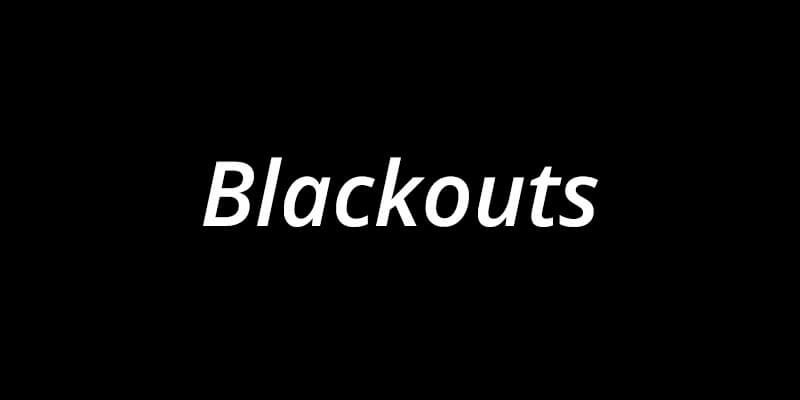
Blackouts
How to watch on TV or live stream every game
Why do blackouts exist?
Regional blackouts are a mandate of the NHL, designed to cultivate and protect a team’s home market. Every team in the NHL has a number of “regional” games–which are sold by the team to a regional broadcaster and are available only to those in a team’s broadcast region–and “national” games, which are available for anyone to watch from coast-to-coast.
How do blackouts work?
Blackouts only apply to in-market NHL games. National games and out-of-market games are not subject to blackouts.
Blackouts are applied based on four criteria:
- The region where a fan is when they view a live NHL game
- The NHL team or teams that are considered in-market for that region
- Whether the fan is attempting to view a game involving the in-market team(s) for that region
- Whether the game they are attempting to watch is a regional game or a national game
When a fan is trying to watch an in-market game they will only be able to access that game on television from the local broadcast partner that owns the TV rights. Within NHL LIVE™ that game will be blacked out.
Who owns the regional rights to each Canadian team?
Edmonton Oilers regional rights are owned by Sportsnet. They have 31 regional games and 25 national games this season.
Calgary Flames regional rights are owned by Sportsnet. They have 31 regional games and 25 national games this season.
Vancouver Canucks regional rights are owned by Sportsnet. They have 26 regional games and 30 national games this season.
Toronto Maple Leafs regional rights are split between Sportsnet and TSN. Sportsnet owns 8, while TSN owns 18 this season. Their 30 national games are owned by Sportsnet.
Winnipeg Jets regional rights are owned by TSN. They have 42 regional games (on TSN) and 14 national games (on Sportsnet) this season.
Ottawa Senators regional rights are owned by TSN. They have 40 regional games (on TSN) and 16 national games (on Sportsnet) this season.
Montreal Canadiens regional rights are owned by TSN. They have 34 regional games (on TSN) and 22 national games (on Sportsnet) this season.
How to watch on TV or live stream every game
When it comes to what games are available for you to watch – your location matters! This page is updated daily to help you follow all the NHL action in 2021.
For more information on each region, SPORTS BLACKOUT SCHEDULE.

